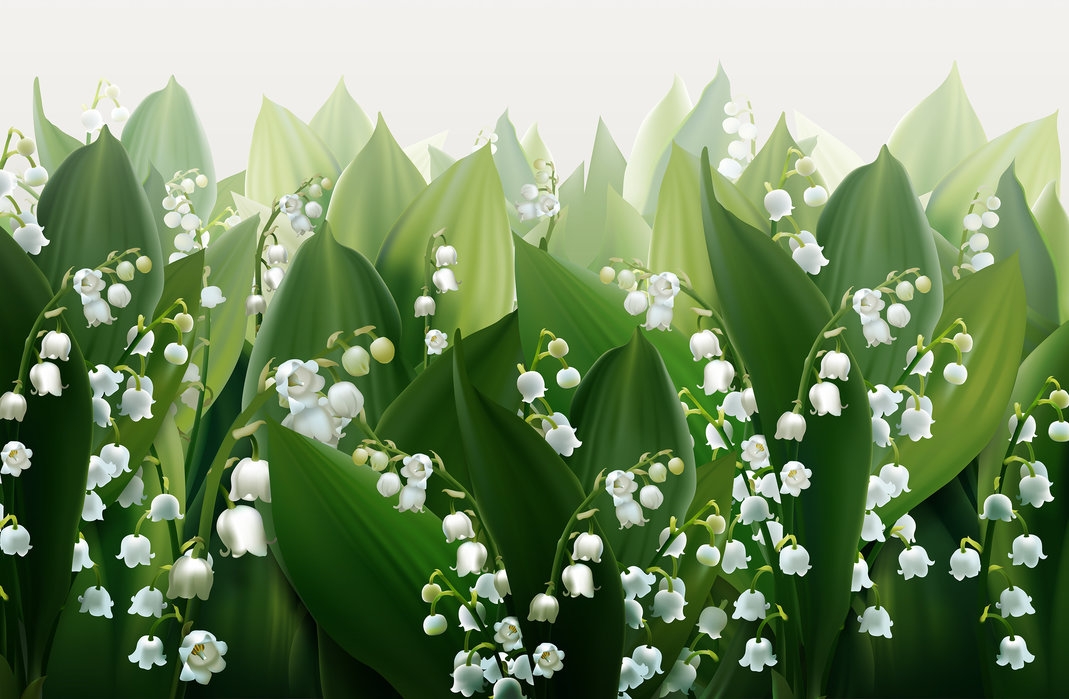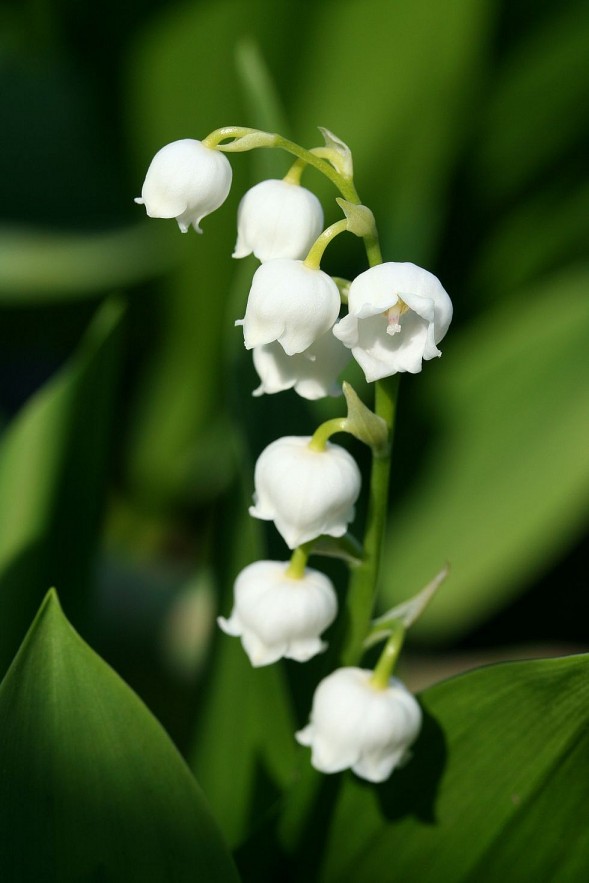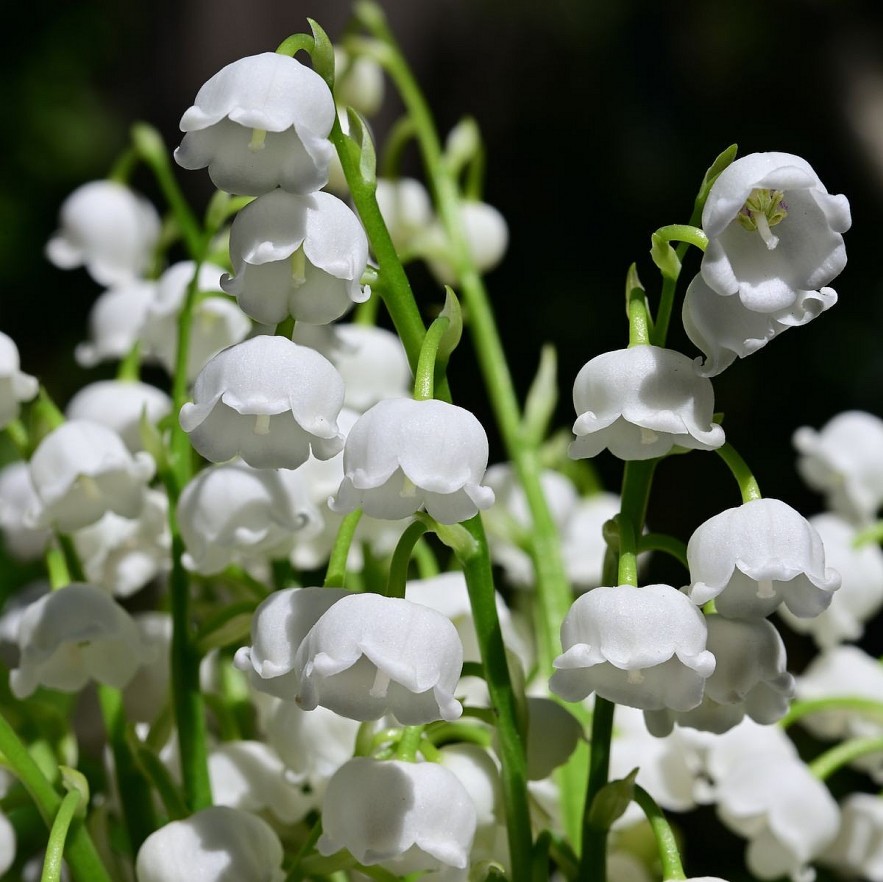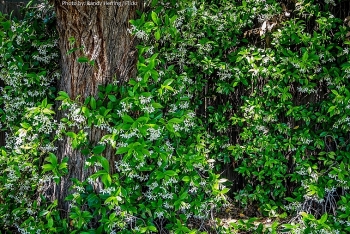Little-Known Facts: Lily of the Valley Flower
 |
| Lily of the Valley Flower - Other names: Conval lily, Lady's tears, May bells, Muguet, Our Lady's tears, Mary's tears. |
| Contents |
What is Lily of the Valley
The herbaceous plant known as "Lily of the Valley" (Convallaria majalis) is a member of the asparagus family. Despite coming from temperate regions of Europe and Asia, it is now widespread in the North Hemisphere. May bells, Our Lady's tears, and Mary's tears are some of their alternate names. In many temperate regions of the world, this flower is grown in shaded garden areas.
The nodding white bell-shaped flowers of the lily of the valley are produced in a cluster on one side of a leafless stalk. The plant's base has the glossy leaves, which are typically two. Red berries make up the fruit. Rhizomes and stolons that creep horizontally below the ground or along the surface of the soil are used by the plant to spread vegetatively. Heart-harming cardiac glycosides are present in every part of the plant and can be consumed by people, animals, and even pets.
True Meanings of Lily of the Valley
Lily of the valley was a flower that connoted "return of happiness" in Victorian flower jargon. It is also referred to as Mary's tears or Our Lady's tears because Mary wept during Jesus' crucifixion. It is a natural symbol of humility due to its diminutive stature and love of the shade. Additionally, the plants are occasionally linked to the virgin Mary's chastity and purity. Last but not least, the traditionally feminine virtues of chastity, purity, and sweetness have been linked to the sweet-smelling white flowers.
Some Little Known Facts about Lily of the Valley
 |
1. It is toxic! However, in the past it was frequently used to treat heart conditions, epilepsy, skin burns, and to induce sedation. This was especially true during World War I. These days, due to its toxicity, it is rarely used.
2. The "true" lily is not the lily of the valley. It actually belongs to the asparagus family, despite its name.
3. Bell-shaped, white, tiny flowers are produced by lily of the valley plants. On top of the flowering stem, they are arranged as a one-sided spike made of five to fifteen drooping flowers. The lily of the valley produces perfect flowers that have both types of reproductive organs.
4. At the beginning of the 20th century, Lily of the Valley was marketed in France on May 1 as a sign of spring.
5. The lily of the valley is a favorite flower of Christian Dior, who created a well-known perfume in the 1950s by attempting to recreate the scent. Many perfume houses attempt to mimic the lily of the valley scent.
6. It was a part of Princess Kate and Prince William's bridal bouquet.
7. Because it is an expensive flower to purchase for use in floristry, it is not frequently used.
8. Because Lily of the Valley flowers only last a day after their stems are cut, bridal bouquets made with them are always made just before the wedding.
9. Lily of the valley is a perennial plant that thrives in cool climates and can endure for many years.
10. Wholesalers sell Lily of the Valley plants that come with the root ball. They require conditioning, which can be accomplished by submerging the roots in a small bucket of water. This will prolong their life before being cut for floristry purposes.
When Should You Plant Lily of the Valley?
 |
| Lily of the valley |
Lily of the valley only needs full or partial shade and moist soil to thrive, and it doesn't need much in the way of maintenance. It blooms from May to June, producing pure white, intensely fragrant bell-shaped blooms and deep red berries, both of which draw attention to the stem's striking contrast of dark green.
Growing from underground rhizomes known as pips, lily of the valley plants spread horizontally and cover large areas of ground quickly. It grows best indoors in a pot before being planted outside in the garden starting in May. In addition, you can purchase it already potted in spring at your neighborhood garden center.
Overcrowded colonies can be divided and replanted in the fall. Make sure to generously mulch the plant's base with either chipped bark or composted leaf mould. You can grow lily of the valley in two ways: by seed sown in trays or containers in a cold frame or greenhouse, or by division in the fall.
Is Poisonous Lily of the Valley?
 |
| Lily of the valley (Convallaria majalis) |
Unexpectedly, the flowers and red berries of this flower, which has an innocent appearance, are toxic if consumed. Keep children and pets away from lily of the valley because it contains cardiac glycosides, which are gastrointestinal irritants and could be harmful or fatal if consumed. The plant can result in vomiting, diarrhea, skin rashes, reduced heart rate, blurred vision, and abdominal pain if consumed. The plant is safe to handle, but it is advised that you thoroughly wash your hands after touching it.
In Conclusion
Do you know about Lily of the Valley's well-known medicinal properties? Lily of the valley's calming effects make it a useful tool for combating emotional distress. The flower's essential oil has calming and soothing effects. It is also effective when applied to the temples or the back of the neck to alleviate nervousness. | 19 Interesting FACTS about Jasmine The showy plant is famous for its beautiful white flowers and rich fragrance. Many people have heard of the flower, or maybe even have a ... |
 | 12 Amazing Facts about Roses You may not Know The rose is not just the most loved flower in the world, it is also the flower that is regarded as the best representation of ... |
 | Top 7 Most Famous Interesting Facts about Dubai Dubai is a city that boasts many world records such as the highest building in the world or a seven-star hotel. Below are some interesting ... |























